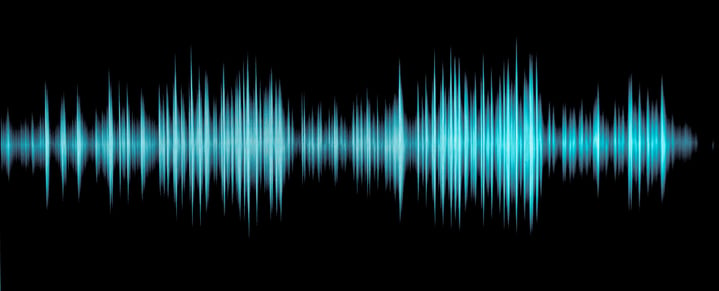Understanding the Audio Frequency Spectrum
Are your tracks sounding thin?
It can be really disheartening. You put forth a ton of effort, feel like you're doing everything right, but the sound keeps coming up short.
Many times people will have the same types of instruments in a track, but it just doesn’t sound as full as the professional one they are referencing. So why is this?
Well, this can be for many reasons, such as:
- Sometimes it’s the mix in general
- Other times you may need additional effects on a track
- You may need different instruments in place for the song to sound full.
First things first, you should have a general idea of what a frequency spectrum
is comprised of.
The spectrum consists of low, low mid, high mid and high frequencies. These four can be wrapped up in the bigger spectrum of Bass, Mids, and Highs.
Each of these parts of the spectrum will consist of different synths, basses, drums and many more instruments.
It’s important to know where each instrument lives in the spectrum so you can know which part is missing if your song is sounding thin.
Let's see how we can bring a track to life.
Table Of Contents
Mixing

If you have a minimalistic song that is equally as simple as a professional song, but you aren’t getting the same full sound, chances are your mix may be slightly off.
It may be hard to tell before you master your track, however. A common misconception is expecting your reference track to have a full professional sound quality without being mastered.
So, putting mastering your track aside, let's discuss components of your mix that could be leading to a thin sound.
Understanding which direction the instruments should be panned is one way to help fill your mix.
For instance, usually vocals, bass and the kick drum will sit smack in the middle of the song, while other instruments such as toms or cymbals will need to be panned to the left or right.
Important Tip: An easy way to remember which way the instruments in a drum kit need to be panned is to think of how the kit is normally set up and pan the instruments as it looks. The kick and snare will be in the middle, the toms are slightly outward, and the cymbals are very spread apart.
While panning will make your mix sound more full and less muffled, it also makes these instruments sit in their own pocket, therefore sounding clearer!
Also, when it comes to synths, they can really be made wide! This will give you that bigger sound that you are looking for, as well.
To accomplish this, you can use an effect such as a chorus, which most DAWs come equipped with when purchased.
 Waves also has a great plugin, Waves S1 Stereo Imager Plug-In, which will help get your instrument pushed out to the sides of your speakers.
Waves also has a great plugin, Waves S1 Stereo Imager Plug-In, which will help get your instrument pushed out to the sides of your speakers.
Another way to spread your synths is by adding unison or more voicings. More voicings will give it more depth and ultimately sound more full. Click here to learn more about voicings.
Many early producers will go to EQ a really lush synth for example, and then cut off the low frequency to make room for the sub-bass, but then cut it off too high and end up cutting into the mid range.
This is an easy mistake to make and everyone has done it. The mids are those frequencies that are crucial in making a mix remain full.
If you cut off too many of your MIDs, the track is bound to sound extremely thin and ‘tinny.’
A lot of people listen to songs with ear-buds, on their laptop, or on phone speakers. All three of these examples don’t really contain any low end, but they do contain mid-range.
Using more notes in your chords can be an easy fix as well. Sometimes, a triad will not cut it in regards to having a full sound.
Adding bass notes and more notes in your chords such as a sus2, sus4 or even a 7th note will leave you will beefier sounds.
Different Instruments
So, your mix-down is sounding great, and your drums, synths and everything else in your track is spread out nicely, yet it still seems like something is missing.
Yeah, that happens too!
What isn’t in your track? Are cymbals the only thing taking up the high frequencies in your track?
Try adding a subtle guitar at a higher octave following the same chords that you’re already using in another instrument.
Arpeggios are a nice way to fill missing areas as well. Arpeggios are essentially a full chord broke down and played one note at a time.
It’s easy to get stuck in the routine of using the same instruments over and over, so getting creative and trying new instruments can be a good way to fill out your spectrum.
Now, you may be thinking if you add a guitar your track will lose its current vibe. The key is, when you add these other instruments, try your best to keep it subtle.
Even putting a few effects on your guitar to make it sound more atmospheric can add the perfect amount of sound you needed without it being distracting to the listener.
Sometimes the listener can’t even tell or decipher that these sounds are in the song, but it does make a world of difference.
Fill it Up!
Now that you have some ideas on how to fill up your frequency spectrum, go try it out!
Mixing your instruments can be something that takes time, but will help you for the rest of your music production career.

Get creative with the different octaves, harmonies and instruments you use and you will find your songs sounding like the pros!
If you want to elevate your Music Production skills and learn from industry-leadings in an immersive music environment, check out the Atlanta Institute of Music and Media.
AIMM offers a Music Production and Audio for Media Associate Degree. You'll gain in-depth knowledge about mixing, mastering, and much more.
You'll be in good company, too!
Did you know that Turbo the Great and Kesha Lee are alumni of AIMM? Pave your path into the Music Industry and learn more about AIMM's Music Production and Audio for Media Degree by clicking the button below.











